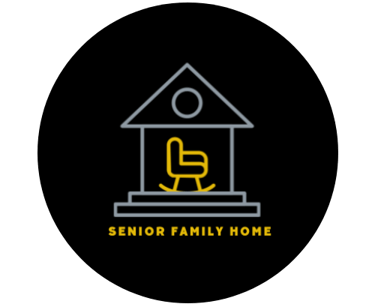Finding Comfort: Chronic Pain in the Golden Years


Imagine Mrs. Thompson, an 82-year-old who once danced every Sunday afternoon with a lightness in her step. Today, she moves slowly, a slight wince betraying the discomfort as she rises from her favorite armchair. Behind her warm smile, a constant, unwelcome companion lurks: chronic pain. This persistent ache, lasting for more than three months, affects a staggering number of older adults, impacting their daily lives, independence, and overall well-being.
For older adults, these risks are even more pronounced. Nearly one-third of seniors have untreated tooth decay, and a staggering 70% of those aged 65 and over have gum disease. By understanding the common age-related changes and adopting proactive habits, you can protect your health for years to come.
Why It Hurts So Much: The Roots of Chronic Pain in Seniors
As we age, our bodies tell unique stories, often etched in aches and stiffness. Many factors contribute to chronic pain in older adults, ranging from the wear and tear of a lifetime to specific health conditions:
Osteoarthritis: This common culprit involves the gradual breakdown of cartilage in the joints, leading to bone-on-bone friction. For many, it manifests as stiffness, swelling, and a persistent ache in the knees, hips, hands, or spine, turning a simple stroll into a test of endurance.
Low Back Pain: Age-related changes in the spine, such as disc degeneration (where the cushioning discs between vertebrae thin out) and spinal stenosis (a narrowing of the spinal canal), can pinch nerves. This often results in chronic back pain that can radiate down the legs, making bending, lifting, or even sitting comfortably a challenge.
Neuropathic Conditions: Damage to nerves can lead to a distinct type of pain, often described as burning, tingling, or electric-shock sensations. Common examples include diabetic neuropathy, affecting nerves in the feet and hands, and post-herpetic neuralgia, a persistent pain that can linger after a bout of shingles.
Muscle and Soft-Tissue Pain: Conditions like fibromyalgia cause widespread musculoskeletal pain accompanied by fatigue, sleep, memory, and mood issues. Chronic myofascial pain syndromes involve persistent pain in specific muscles or groups of muscles, often with tender trigger points.
Osteoporosis-Related Fractures: The weakening of bones due to osteoporosis can lead to vertebral compression fractures in the spine, even from minor movements. These fractures can cause significant and persistent back pain, limiting mobility and quality of life.
For Mrs. Thompson, leaning over her beloved rose garden triggers a familiar “zap” in her lower back, a constant reminder of her spinal stenosis. For Mr. Patel, 76, it’s the constant throb in his osteoarthritic knees that keeps him awake at night, wishing for a moment of quiet relief.
More Than Just a Sore Body: The Far-Reaching Impact of Chronic Pain
Chronic pain doesn’t stop at the skin. It seeps into every corner of life, casting a long shadow over an older adult's physical, psychological, and social well-being:
Physical Decline: Constant pain can lead to reduced mobility, slower walking speed, and impaired balance, significantly increasing the risk of falls—a major concern for seniors. It can also cause sleep disturbances, persistent fatigue, and appetite changes, further diminishing their physical resilience.
Emotional Toll: Living with unrelenting pain can be incredibly draining. It often fuels mood disorders such as depression, anxiety, and irritability, making it difficult to find joy in activities once cherished. The feeling of helplessness and loss of control can be overwhelming.
Social Isolation: When movement is painful and spirits are low, older adults may withdraw from social activities, family gatherings, and community engagement. This can lead to increased loneliness and social isolation, creating a vicious cycle where decreased social interaction exacerbates feelings of pain and depression.
Loss of Independence: Perhaps one of the most devastating impacts of chronic pain is the gradual erosion of independence. Simple tasks like dressing, cooking, or driving become challenging, forcing reliance on others. When pain steals their ability to live life on their own terms, seniors often lose a bit of themselves too.
Listening Closely: The Art of Pain Assessment
Evaluating pain in the elderly requires sensitivity, patience, and an understanding of potential communication barriers. It's not just about asking, "Does it hurt?" but about truly listening to their experience:
Start with Patient-Reported Scales: If cognition permits, begin with simple scales like the 0-10 Numerical Rating Scale. A gentle inquiry like, “On a calm day, is your pain a 3 or a 7?” can provide valuable insight.
Observe for Non-Verbal Cues: For those with dementia, aphasia, or other communication challenges, observation is key. Look for grimaces, guarding movements, changes in breathing patterns, increased agitation, or how they shift uncomfortably in a chair. Tools like the Pain Assessment in Advanced Dementia (PAINAD) scale can be helpful.
Conduct a Multidimensional Review: A thorough assessment goes beyond intensity. Ask about the pain’s characteristics (onset, duration, quality, location, what makes it better or worse), its functional impact (how it affects daily activities), and their emotional state.
Consider Co-morbidities and Medications: Reviewing a patient's medical history for other conditions (e.g., kidney disease, heart problems) and a complete list of medications is crucial. Also, be aware that many older adults may underreport pain, believing it’s “just part of aging” or fearing medication side effects.
Pathways to Relief: A Multidisciplinary Approach
No single remedy completely erases chronic pain, but a comprehensive, interdisciplinary approach—combining pharmacological, non-pharmacological, and psychosocial interventions—offers the best chance for sustained relief and improved quality of life.
Medications with Care:
- Over-the-Counter Choices: For mild to moderate pain, common options include:
• Acetaminophen (Tylenol®): Often the first-line choice due to its relatively safe profile, especially for musculoskeletal pain.
• NSAIDs (non-steroidal anti-inflammatory drugs) like Ibuprofen (Advil®, Motrin®) or Naproxen (Aleve®): Effective for inflammatory pain, but require caution due to potential side effects on the gastrointestinal tract, kidneys, and cardiovascular system. They should be used at the lowest effective dose for the shortest possible duration.
- Prescription Options: When OTC options aren't enough, doctors may prescribe:
• Adjuvants for Neuropathic Pain: Medications like duloxetine (Cymbalta®), an antidepressant, or gabapentin (Neurontin®), an anticonvulsant, can be highly effective for nerve-related pain.
• Stronger NSAIDs or COX-2 Inhibitors: Higher doses of NSAIDs or specialized anti-inflammatory drugs may be prescribed for specific conditions.
• Opioid Analgesics: These are generally reserved for severe, refractory pain and are used with extreme caution in older adults due to risks of sedation, falls, constipation, and dependency. Careful tapering and monitoring are essential.
Safety First: It's critical to remember that even OTC pills carry risks. Always stick to the dosing labels, be aware of warnings regarding liver damage (acetaminophen) or stomach/renal issues (NSAIDs), and never mix products with the same active ingredient. Persistent pain that disrupts sleep, mood, or daily activities deserves a chat with your doctor or pharmacist. They can assess the underlying cause, consider potential drug interactions, and tailor a safe and effective treatment plan.
Movement and Mastery:
- Physical Therapy: A cornerstone of pain management, physical therapists design individualized exercise programs to rebuild strength, improve flexibility and balance, and enhance overall function. This can help re-establish confidence in movement.
- Occupational Therapy: Occupational therapists focus on adapting daily activities and environments to reduce pain and increase independence. This might involve suggesting a raised toilet seat, a lightweight cane, ergonomic kitchen tools, or teaching energy-conservation techniques.
Mind and Heart:
- Cognitive-Behavioral Therapy (CBT): This powerful therapy teaches individuals coping skills to manage pain, addresses negative thought patterns, and helps reframe fears (“I can’t” becomes “I’ll try differently”). It empowers patients to actively participate in their pain management.
- Support Groups and Workshops: Group sessions, like chronic disease self-management workshops, provide a safe space for older adults to share experiences, learn from others, and find emotional support. Laughter, shared stories—and perhaps even a gentle chair yoga class—can become powerful medicine.
Touch and Tradition:
- Complementary Therapies: Practices like acupuncture, massage therapy, and mindfulness meditation can offer holistic relief and a sense of well-being.
- Simple Comforts: Sometimes, the most effective remedies are the simplest: a grandchild’s gentle massage, a tai chi session in the park, or a few minutes of guided breathing. These small anchors can provide moments of peace in a stormy sea of discomfort.
Walking Together: Overcoming Barriers and Optimizing Outcomes
Chronic pain is a journey no one should travel alone. Many barriers can hinder effective pain management in the elderly:
Polypharmacy: The challenge of managing multiple medications for various conditions increases the risk of harmful drug interactions and side effects.
Underreporting: As mentioned, many older adults simply don't complain about pain, believing it's an inevitable part of aging.
Provider Bias: Unfortunately, pain in the elderly is sometimes undertreated due to misconceptions about their pain tolerance or limited life expectancy.
Access Issues: Transportation difficulties, financial constraints, and limited access to specialized rehabilitation or complementary services can create significant hurdles.
To ensure the best possible outcomes for older adults in pain, we must:
Conduct Regular Pain Assessments: Pain is dynamic. Consistent monitoring and proactive adjustment of treatment plans are essential.
Prioritize Shared Decision-Making: Respecting the patient’s goals (e.g., maintaining independence versus aiming for complete pain eradication) is paramount.
Ensure Coordinated Care: Collaboration among primary care physicians, geriatricians, physical therapists, mental health professionals, and pharmacists is vital for a holistic approach.
Leverage Telehealth: For those with limited mobility, telehealth services can provide convenient access to consultations and follow-up care.
In rediscovering comfort, seniors reclaim more than just a pain-free moment—they reclaim pieces of the life they love, allowing them to engage with family, pursue hobbies, and enjoy their golden years with dignity and vitality.


